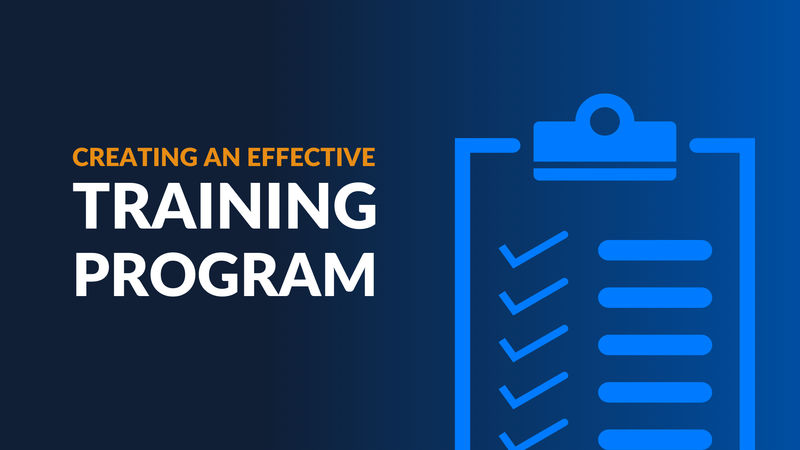
Creating a Training Program: 7 Steps to Developing Stronger Employees
Posted on 12/24/20 By Brittany K. King
There is a lot of value to be gained from creating a training program for workers at all levels of business, including higher employee engagement and retention rates, more innovative thinking, and increased compliance with laws and industry regulations.
Providing your employees training and development opportunities is no longer a choice. Millennials, who will make up three-quarters of the global workforce by 2025, are especially keen on receiving more training at work.
In fact, 87% of millennials believe learning and development in the workplace is important and 76% agree that professional development opportunities are one of the most important aspects of company culture.
Haphazard attempts to create an employee training plan won't cut it. Your company training program needs to be strategical to support your organizational objectives and your employees' individual goals.
Developing a training plan doesn't have to be overwhelming. Below are simple steps to follow (and a free strategy workbook) so you can get started on building an effective employee training program.
7 Steps to Create an Employee Training Program
Creating an effective training program for employees is not difficult, but it does take time and consideration. Training programs that fail usually do so because they are not strategically mapped out prior to implementation.
Follow these steps to build a successful training program:
1. Identify your company’s employee training goals
Align with your organization’s overall strategy and priorities and consult with key stakeholders and decision makers.
Think of it this way: you can't purchase a plane ticket if you don't know your destination. Similarly, you cannot create a training program without a firm understanding of its end goal.
2. Take note of current training programs
Make a list of all users, what the training is, who the vendor is, the cost, and the success of the existing programs.
You might find you are paying for training that is underutilized or no longer needed in your organization.
3. Conduct a skills gap analysis
After you identify your company goals, you need to find out where knowledge gaps exist within your organization.
Have each employee complete a SWOT analysis so you can easily identify the areas individuals and departments are excelling and where they have shortcomings.

4. Address the curriculum your organization needs
There are certain types of training your organization will need, including state-mandated harassment training, OSHA training, and any mandatory continuing education (CE) for licensed professionals.
Continuing education ensures certain professionals comply with laws, remain licensed, or keep their memberships in an association or licensing body. Take note of any employees in your organization who require CE when creating your training program.
5. Address the curriculum your employees want
Ask your employees and team leads what training topics will help them fulfill their job duties. You should also gather feedback from your organization's managers, team leaders, and department heads to see what skills they want their employees to develop.
You may also find there are other areas in your organization that lack proper training, such as employee onboarding and skills development.
6. Find the right training partner
It’s more cost-effective to use a vendor who offers all or most of your training needs, rather than paying for individual courses and materials.
Centralizing your company training program will also make it easier to track employee progress and report on the program's success.
7. Create an internal training process
Figure out who will be responsible for implementing the program, answering employee questions, assigning courses, and completing other similar tasks.
Assigning responsibilities and holding individuals accountable for creating and supporting your training program will help ensure long-term success.
Employee Training Program Strategy Workbook
Now that you know how to create a training program, it's time to get things in motion.
Our Learning & Development Strategy Workbook is a detailed guide of everything you need to create and implement a successful employee training program.
This interactive workbook helps you:
- Identify goals to create your training program
- Craft a training plan for your employees
- Discover course topics to include in your training plan
Download our free workbook with training program templates and course suggestions.
Related Articles
What exactly is upskilling with training? Upskilling with training can have huge benefits for organizations of all shapes and sizes. If you're still on the fence, here is why your organization should prioritize upskilling training.
How can you make sure your training program is effective? Follow these 10 employee training tips so you can feel confident in the effectiveness of your training program.
When you offer employees hard skills training, you are providing them with the tools necessary to learn and strengthen specific capabilities needed to carry out job functions. Learn more about the importance of hard skills in the workplace.




